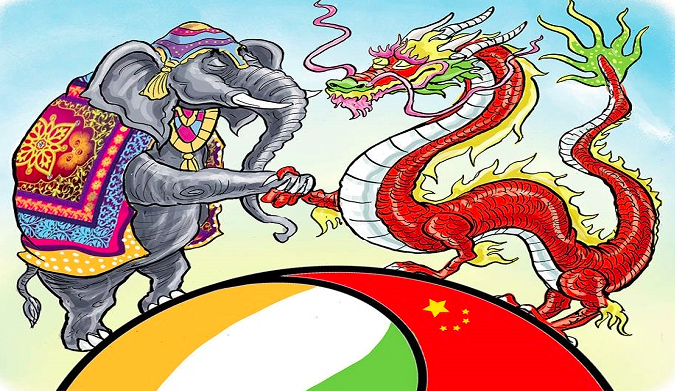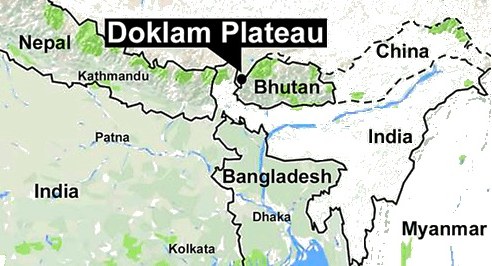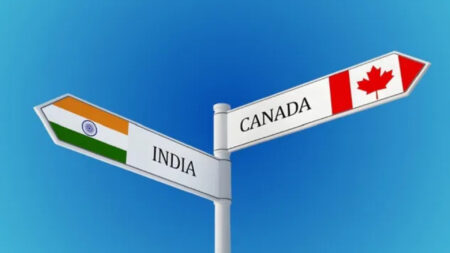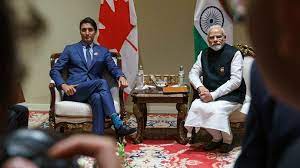
The Beginning:
- In the early 1950s, when China became the People’s Republic of China in 1949 and India gained independence in 1947, both countries took the first step toward becoming sovereign states. The People’s Republic of China’s position on Taiwan was initially recognised by India, which also backed China’s permanent membership in the UN.
- India acknowledged Chinese control over Tibet in 1954. The “five principles of cohabitation,” commonly known as Panchsheel, were defined in India and China. The Chinese President and Indian Prime Minister both traveled to China in the same year, spreading the phrase “Hindi Chini Bhai Bhai.”
- But these good times came to an end when a border dispute arose. China does not recognise the McMahon Line as a de facto boundary and thinks that the boundary should be settled through discussions. India considers the McMahon Line to be a de facto boundary.
- Arunachal Pradesh is a portion of the North East Frontier Agency that is subject to controversy; it is about 90000 km long. Aksai Chin, another disputed territory on the western frontier, is barren but nevertheless extremely significant strategically.
- There were numerous attempts to resolve the boundary disputes, but none of them were successful. The Indian Prime Minister at the time, Jawahar Lal Nehru, believed in advancing POLICY. However, the relationship was gradually deteriorating, and in 1959, when a rebellion broke out in Tibet, India granted shelter to DALAI LAMA, putting a final nail in the coffin. China was enraged by this and made the decision to give India a lesson.
- China attacked India in October 1962, and India suffered a severe blow. A month later, China unilaterally proclaimed a cease-fire.

Relations between India and China following the 1962 War:
- India was devastated by the 1962 War on all fronts—militarily, economically, and psychologically—as it had put China on every pedestal to foster relations.
- By 1970, India and China had chosen to support the USSR and the USA, respectively. On the other front, China had begun to help Pakistan, India’s arch-enemy.
- When the then Indian Prime Minister Rajeev Gandhi visited China in 1988, shortly after granting Arunachal Pradesh sovereignty, the two nations decided to put border disputes on the back burner of diplomacy and work on their relationship pragmatically.
- By the 1990s, both nations—especially Beijing—understood the importance of India and the advantages of cooperating with it. The Line of Actual Control Peace and Tranquility Agreement was signed by India and China in 1993. The primary military agreement to secure the boundaries was inked in 1996.
- India’s nuclear test once more drove relations in the wrong direction. However, when Atal Bihari Vajpayee, the then-prime minister, visited China in 1993, they referred to the Tibetan Autonomous Region (TAR) as being a fundamental component of China.
- India and China began their strategic discussions in 2005, taking a giant step toward relationship development. And “Ten-Pronged Strategy” was launched before the end of 2006. China received a comparable status in SAARC in the same year that India joined the Shanghai Cooperation Organization (SCO) as an observer member.
- A hotline for communication between the two premiers was set up in 2010 at Beijing’s request, outside of regional and international ties.
- Aside from their political ties, both nations pursued progressive economic trends, enhancing commerce by boosting connectivity through BCIM, reopening the Nathu La Pass between Sikkim and Tibet in 2006, and other measures.
- Following 2008, both nations emphasized their foreign and international policies and worked to diversify their bond holdings. This gives both nations the impression that the other is undermining their status and interests.
- China believed that the Modi government was not very friendly with China and that India’s significant ties to the West, particularly the USA, were not appreciated by China, and this misperception peaked in 2017. Despite the fact that India places a strong premium on improved Sino-Indian relations and their “neighborhood first” strategy. The China-Pakistan Economic Corridor (CPEC) and the Belt and Road Initiative, on the other hand, put India in a precarious position. As a result, there was a standoff at the Doklam boundary and China stepped up its patrol of the Indian Ocean.

- Such standoffs and border conflicts between the two main Asian nations have occurred periodically ever since. The tension between the two countries is exacerbated by China’s refusal to include terrorists and terrorist groups on the UN censure list. China is also opposed to India being a member of the Nuclear Supplier Group.
- The entire globe believed that China had initiated a biological war on the rest of the world during COVID-19. It caused a stalemate around the globe.
China is attempting to establish its global hegemony. The world is concerned about China’s growing military and economic power:
- China is attempting to establish its hegemony in the South China Sea by asserting its claim to the region.
- China is gaining access to the nations of the Indian Ocean through its Belt and Road Initiative.
- Give loans with a very long period in developing nations and exploit their resources and land as repayment in the form of payments.
President Xi Jinping will serve a third term after the conclusion of the Communist Party Congress in China. Because Xi’s main objective is to establish China’s military power and make China independent in every manner possible, this worries both the US and India. What remains to be seen is how India will continue to develop its relationship with China.
READ MORE
Pulitzer Prize winner Sanna Irshad Mattoo and discrimination against Kashmiri journalists













